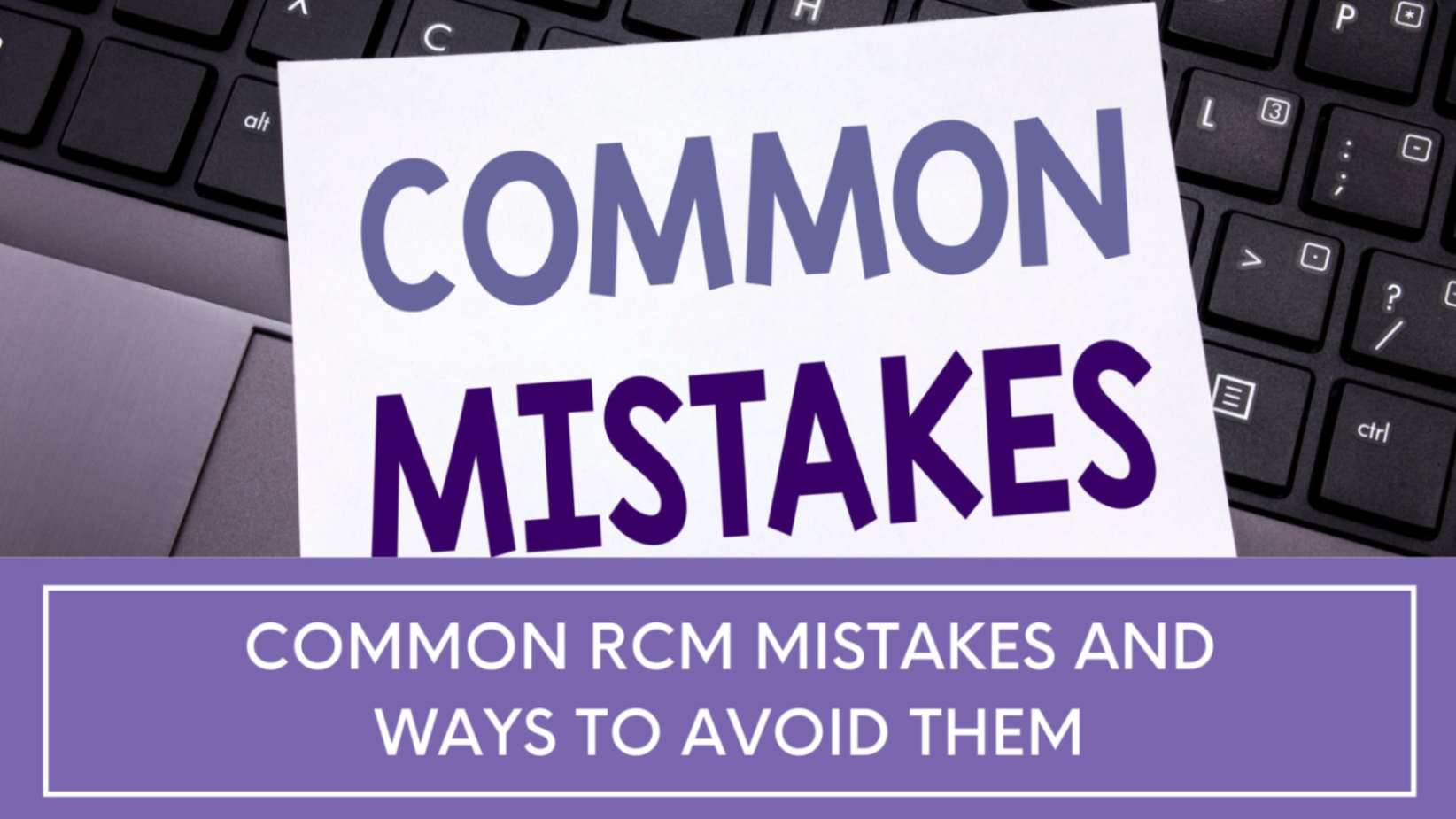Common RCM Mistakes and Ways to Avoid Them
There are several moving elements and components that go into operating a successful and economically sound medical practice. Having a simplified RCM- revenue cycle management healthcare approach is one of the important aspects of long-term success. Unfortunately, there are a few basic mistakes that the majority of people make, so keep reading to find out how to spot them.
Table of Contents
What is RCM & why is it necessary?
The term “Revenue Cycle Management” entails the entire operation of processing payments & managing reimbursements. Healthcare RCM services combine billing data with administrative records, patient personal details, clinical information, insurer’s names, & medical codes.
A key foundational component of health data management is RCM- Revenue Cycle Management.
Poor billing procedures can lead to huge financial losses or perhaps jeopardise the capacity to provide high-quality care. To maintain financial success and guarantee the sustainability of the practice, providers should work to enhance and streamline their fundamental operational processes.
The healthcare revenue cycle starts whenever the patient schedules an appointment and closes when dollars are successfully collected. Yet, there are several stages in between that need to be handled precisely and effectively to assure prompt payment. Human mistakes are common simply due to the coding complexity, misinterpretation, billing errors caused by duplicate data, or simply missing/misspellings, all of which can lead to revenue loss.
What Effects Can Bottlenecks in Clinics Have on Efficiency?
Health systems that use efficient healthcare revenue cycle solutions could save expenses while concentrating on enhancing patient health outcomes. Whenever care providers use an integrated coding & billing system, they could achieve better rates of smooth claims, yielding increased income and profits.
Streamlining the administrative procedures for your healthcare practice will benefit your clinic. For the long-term success of the practice, bottlenecks must be actively avoided, from the percentage of a properly finished claim to improved billing cycles.
Healthcare RCM Services: Common Mistakes
The most prolific healthcare revenue cycle mistakes that health providers make and which negatively impact performance metrics, are listed below.
Working with Disorganized Administrative Systems
In spite of the fact that the front & back ends of the workplace sometimes have multiple objectives, if data is not shared freely among them, it may lead to errors or claim denials. Effective communication about insurance eligibility following patient onboarding can help with insurer integration and claims reimbursement, while also aiding payment collection.
Pay special attention to front-end clerical work, to speed up claims processing and help uninsured patients in understanding their individual insurance exchange plan alternatives. With repeated visits, it is possible to forget to verify the patient’s insurance details, which could lead to eligibility denials.
Problems with Patient Insurance Eligibility
Your healthcare revenue cycle solutions must include communication with health insurers. If the claims processing cycle is neglected after filing, claims could become delayed, denied, rejected, or perhaps never processed. Managing claims will help raise awareness and cut down on recurrences, and this in turn simplifies the overall revenue cycle for your clinical practice. For example, you can find out whether there are faults with particular procedures/codes.
Not Making Use of Technological Resources
The potential to generate required reports in RCM can both benefit from the development of solid supportive healthcare IT framework. Implementing an electronic system can also assist to synchronise front and back office communication and even get rid of misplaced paper records. Numerous technologies can be accessed to aid in streamlining the operations of your medical practice.
Patient Payment Issues
The patient’s obligation for health expenditure is increasing, when patient payments are collected either before or during the treatment, the possibility of non-payment is fully avoided. This is sometimes a difficult process because many patients cannot pay large deductibles and are generally uninformed about their financial responsibilities.
Pre-registering patients is crucial to obtaining the most correct info regarding their health records and insurance details upfront to lower claim rejections. This will enable front-loading the financial transactions by collecting data on health insurance coverage, supplementary insurance, and total authorised visits, and assessing the person’s financial liability, which benefits your healthcare RCM services.
Methods for Avoiding Bottlenecks & Improving Efficiency
Follow these measures to avoid frequent Healthcare Revenue Cycle Management (RCM) mistakes:
Make your administration team work together
The whole healthcare revenue cycle procedure for your clinical care benefits from maintaining a consistent administrative team approach. For instance, claims which are submitted accurately and on time are paid foremost. Focusing on such early dollars will help you maximise reimbursement because you will either get paid or face rejection. The most current balances are typically the easiest to obtain. Maintain correct consistency and discipline in the collection of all early balances before allowing your employees to turn their attention to much aged balances.
Employ a Strategic Patient Reimbursement Approach
If you want to effectively and tactfully contact patients about their payment to your clinical practice, then consider developing an outward calling plan. This mostly stimulates more payments from patients, but it could also enhance their whole experience and strengthen ties with them.
Just a tiny percentage of patients cover their costs only through their statements; when you proactively call these individuals, your overall payments will increase. Patients typically only want a little bit of further info, a clarification, or occasionally a push to agree to pay. When there are larger barriers that hinder them from paying, you can discuss your payment alternatives with them or cooperate to design a personalised payment scheme for them.
Let Practolytics take care of your medical billing concerns
Outsourcing can significantly increase both the internal as well as external productivity of your clinic. A billing company, for instance, can provide your clinic with 24/7 monitoring through analytics or operate in-house as an EHR– Electronic Health Records Specialist. In this way, the outsourcing company can help guarantee that adherence to incentive programmes does not divert your team’s attention from patients.
With Practolytics, you will get a professional team by your side to assist you to handle the realms of the healthcare revenue cycle – billing, health software, and much more! Consult us now to find out ways we can improve your clinic and improve patient access, ensuring that you provide the best treatment possible.
ALSO READ – 5 Medical Credentialing Challenges and Their Solutions
Talk to Medical Billing Expert Today — Get a Free Demo Now!






